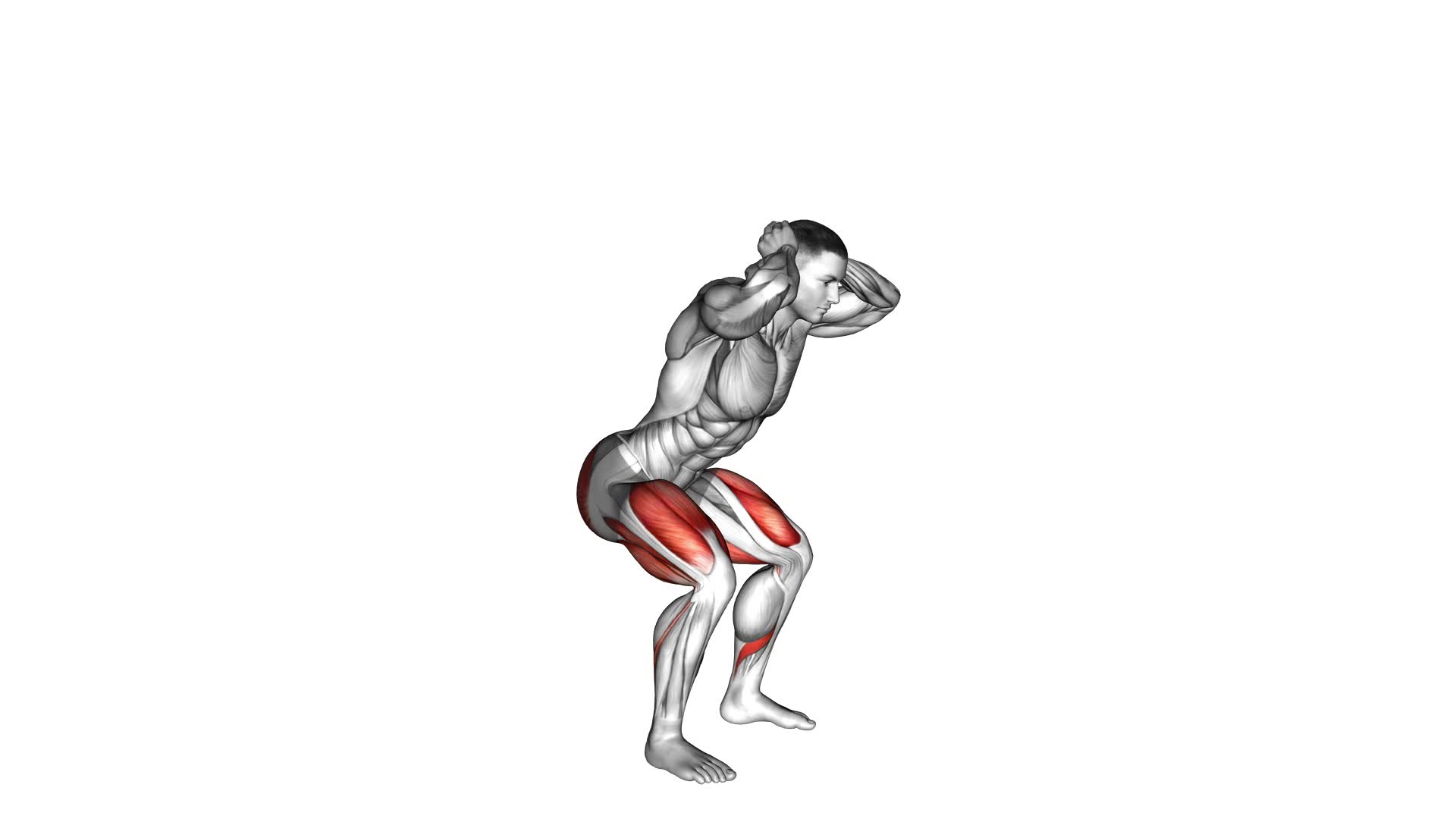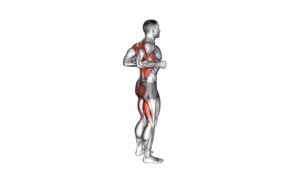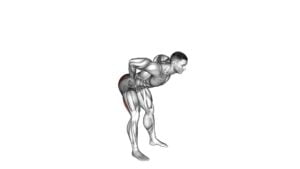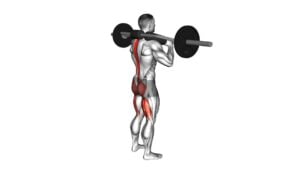Good Morning Squat – Video Exercise Guide & Tips

Get ready to transform your workout routine with the Good Morning Squat! This powerful exercise targets your glutes, hamstrings, and lower back, giving you a strong and sculpted lower body.
Watch This Exercise Video
In this video exercise guide, we'll show you the proper form and technique, along with variations and modifications to suit your fitness level. Say goodbye to common mistakes and hello to maximal results.
Get ready to squat your way to a fitter you!
Let's get started!
Key Takeaways
- Targets multiple muscle groups
- Improves overall strength, flexibility, and posture
- Strengthens lower back and glute muscles
- Enhances hip mobility and flexibility
Benefits of the Good Morning Squat
- There are five key benefits you can experience when performing the Good Morning Squat. Not only does this exercise target multiple muscle groups, but it also helps improve your overall strength, flexibility, and posture. By incorporating the Good Morning Squat into your workout routine, you can enjoy a variety of advantages.
Firstly, one of the main benefits of the Good Morning Squat is its ability to strengthen your lower back and glute muscles. By engaging these muscles during the exercise, you can develop a stronger core and improve your overall stability. This can be particularly beneficial for athletes or individuals who engage in activities that require a strong lower body.
Secondly, the Good Morning Squat also helps to improve your hip mobility and flexibility. As you perform the exercise, you're required to hinge at the hips, allowing for a greater range of motion. This can help alleviate tightness and improve your overall movement patterns.
Lastly, performing the Good Morning Squat with proper form can also enhance your posture. By engaging your core and maintaining a neutral spine throughout the exercise, you can improve your alignment and prevent issues such as rounded shoulders or a forward head posture.
Proper Form and Technique
To perform the Good Morning Squat with proper form and technique, you should focus on maintaining a neutral spine and engaging your core throughout the exercise. This will ensure that you get the most out of this compound movement while minimizing the risk of injury.
Here are some key points to keep in mind:
- Keep your feet shoulder-width apart and toes pointing slightly outward.
- Start by hinging at your hips, pushing your buttocks back while keeping your chest lifted.
- As you lower your upper body, make sure to maintain a straight line from your head to your tailbone.
- Bend your knees slightly as you descend, keeping them in line with your toes.
- Push through your heels to stand back up, squeezing your glutes at the top.
Common misconceptions about the Good Morning Squat include the belief that it's solely a hamstring exercise. While it does target the hamstrings, it also engages the glutes, lower back, and core.
Additionally, it's important to be aware of common injuries associated with this exercise, such as lower back strain or knee pain. By practicing proper form and technique, you can mitigate these risks and reap the benefits of the Good Morning Squat.
Variations and Modifications
Try out different variations and modifications of the Good Morning Squat to add variety to your workouts and target different muscle groups. There are various equipment options you can use to modify this exercise.
If you want to increase the intensity, you can try using a barbell across your shoulders or holding dumbbells in your hands. This will challenge your muscles and help you build strength. On the other hand, if you prefer a lower impact workout, you can use resistance bands or simply perform the exercise without any additional weight.
In addition to equipment options, you can also modify the Good Morning Squat based on your progression level. If you're a beginner, start by performing the exercise with just your body weight to master the proper form and technique. As you become more comfortable, gradually increase the weight or resistance to challenge yourself.
You can also try adding variations such as a single-leg Good Morning Squat or a wide stance Good Morning Squat to target different muscle groups.
Common Mistakes to Avoid
One common mistake to avoid when performing the Good Morning Squat is allowing your back to round. This can put unnecessary strain on your spine and increase the risk of injury. To ensure proper execution of the Good Morning Squat, here are five common mistakes to avoid:
- Not maintaining a neutral spine: Keep your back straight throughout the movement. Avoid rounding or arching your back.
- Using too much weight: Start with lighter weights and gradually increase as you gain strength and improve your form.
- Not engaging your core: Remember to tighten your core muscles throughout the exercise to provide stability and support for your spine.
- Leaning too far forward: While it's important to hinge at the hips, avoid leaning excessively forward, as this can put strain on your lower back.
- Rushing the movement: Take your time and focus on the proper form. Avoid using momentum and perform the exercise in a controlled manner.
By avoiding these common mistakes, you can ensure that you're performing the Good Morning Squat correctly and maximize the benefits of this exercise. Remember to always prioritize proper form and technique to prevent injuries and achieve optimal results.
Keep up the great work!
Tips for Maximal Results
To achieve maximal results from the Good Morning Squat, focus on these key tips.
Firstly, make sure to maintain proper form throughout the exercise. Keep your back straight, chest up, and core engaged. This will help target the correct muscles and prevent injury.
Additionally, it's important to start with lighter weights and gradually increase the load as you become more comfortable with the movement. This progressive overload will maximize gains and prevent plateauing.
Another effective training technique is to vary your foot placement. Experiment with wider or narrower stances to target different muscle groups. This will ensure a well-rounded workout and prevent muscle imbalances.
Furthermore, don't forget to include the Good Morning Squat in your regular workout routine. Consistency is key when it comes to seeing improvements. Aim for at least 2-3 sessions per week to reap the benefits.
Lastly, listen to your body. If you experience any pain or discomfort, adjust the movement or consult with a fitness professional. Remember, effective training techniques prioritize safety and longevity. So, push yourself, but not at the expense of your well-being.
Keep these tips in mind and watch as your gains soar.
Frequently Asked Questions
Can I Perform the Good Morning Squat if I Have a Pre-Existing Back Injury?
If you have a pre-existing back injury, it's important to consider modifications for the good morning squat exercise. This exercise puts strain on the lower back, so it may not be suitable for everyone.
Instead, focus on alternative exercises that target the same muscle groups without causing additional pain or injury. Consult with a healthcare professional or a certified personal trainer who can guide you in finding the best exercises for your specific needs and limitations.
How Many Calories Does the Good Morning Squat Burn?
Looking to burn calories and reap the benefits of the good morning squat? This exercise is a great way to engage multiple muscle groups and boost your calorie burn.
By targeting your glutes, hamstrings, and lower back, the good morning squat can help you torch calories and build strength. Incorporating this move into your workout routine can lead to increased calorie expenditure and improved overall fitness.
Can the Good Morning Squat Help Improve My Posture?
The good morning squat is a fantastic exercise for improving your posture. By incorporating this movement into your routine, you can experience improved balance and increased flexibility.
This exercise targets the muscles in your lower back, glutes, and hamstrings, which are essential for maintaining good posture. By strengthening these muscles, you can stand taller, reduce the risk of back pain, and improve your overall posture.
Is It Necessary to Use Weights While Performing the Good Morning Squat?
When performing the good morning squat, you may wonder if using weights is necessary. While adding weights can increase the intensity and challenge your muscles, it isn't essential to use them.
The good morning squat without weights still offers many benefits, such as improving your posture, strengthening your lower back and hamstrings, and increasing overall lower body strength.
Can the Good Morning Squat Help With Improving Athletic Performance?
The good morning squat is a fantastic exercise for improving athletic performance. By incorporating this movement into your workout routine, you can see improvements in agility and increased power.
This exercise targets your hamstrings, glutes, and lower back, all of which are crucial for athletic movements like sprinting and jumping.
Conclusion
Incorporating the good morning squat into your exercise routine can have numerous benefits for your body. By maintaining proper form and technique, you can maximize the effectiveness of this exercise.
Don't be afraid to try out different variations and modifications to challenge yourself and target specific muscle groups. Avoid common mistakes and follow these tips to achieve optimal results.
Stay motivated and keep pushing yourself to reach new fitness goals with the good morning squat!

Author
Years ago, the spark of my life’s passion ignited in my mind the moment I stepped into the local gym for the first time. The inaugural bead of perspiration, the initial endeavor, the very first surge of endorphins, and a sense of pride that washed over me post-workout marked the beginning of my deep-seated interest in strength sports, fitness, and sports nutrition. This very curiosity blossomed rapidly into a profound fascination, propelling me to earn a Master’s degree in Physical Education from the Academy of Physical Education in Krakow, followed by a Sports Manager diploma from the Jagiellonian University. My journey of growth led me to gain more specialized qualifications, such as being a certified personal trainer with a focus on sports dietetics, a lifeguard, and an instructor for wellness and corrective gymnastics. Theoretical knowledge paired seamlessly with practical experience, reinforcing my belief that the transformation of individuals under my guidance was also a reflection of my personal growth. This belief holds true even today. Each day, I strive to push the boundaries and explore new realms. These realms gently elevate me to greater heights. The unique combination of passion for my field and the continuous quest for growth fuels my drive to break new ground.



